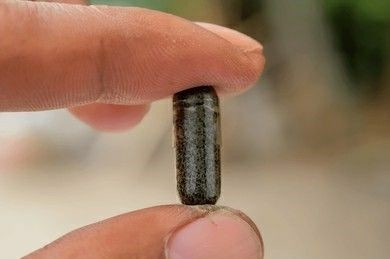Pharmacokinetic Analysis of Herbal Medicines
Inquiry
Herbs are often compounded and contain hundreds or thousands of ingredients that enter the body at the same time. The complexity and variability of the active ingredients make their ADME characteristics and kinetics in vivo very different from the classical pharmacokinetics of chemical drugs. Lifeasible provides pharmacokinetic analysis of herbal medicines to help you scientifically evaluate the pharmacokinetic characteristics of herbal medications in the body, reveal the material basis of their effects, and clarify the correlation between in vivo exposure and efficacy.

What we offer in the pharmacokinetic analysis of herbal medicines
- Examination of the in vivo substance exposure of the herb after administration.
- The pharmacokinetic characteristics, absorption, and in vivo processes (distribution, metabolism, excretion) of the active ingredients of the herb and the associated molecular mechanisms of action.
- The relationship between in vivo exposure and pharmacokinetic characteristics of herbal components and their pharmacodynamic effects.
- Examine the safety aspects of herbal medicines concerning the in vivo exposure and processes of the target ingredients.
- Pharmacokinetic mechanisms and modes of action of prescription combinations.
- Pharmacokinetic issues in the combination of herbal and chemical drugs.
Analytical ideas and methods
- Multi-component pharmacokinetics of herbal medicines.
We use the simultaneous quantitative characterization of the kinetics of multiple individual components to characterize the kinetics of herbal medicine as a whole. For comparative pharmacokinetic analysis of active monomers and herbal extracts, we can analyze the multi-component pharmacokinetic interactions of herbal extracts by measuring the pharmacokinetic parameters of each component separately after administration of multiple monomers and/or monomer mixtures and equivalent doses of herbal extracts and comparing the differences.
- Herb pharmacokinetics based on omics.
We offer omics-based analysis solutions, including chemical substance omics and herbal pharmacokinetics-metabolomics. Metabolomics can indirectly characterize the pharmacokinetics of herbal combinations and can even reflect individual differences in pharmacokinetics. Chemical substance omics is the analysis of the material basis of herbal medicines using a combinatorial chemical or histological approach by considering the complex components contained in a single herb or herbal formula as a combinatorial chemical library or chemical substance group. We isolate the spices and then use modern instrumental analytical methods such as liquid mass spectrometry and high-resolution mass spectrometry to resolve the components and identify the active substance groups.
- Pharmacokinetic and pharmacodynamic (PK-PD) combination.
The PK-PD model is designed to elucidate the absorption, distribution, transformation, and excretion processes and the time-dependent kinetics of the drug in vivo, while the latter characterizes the changes in drug effects over time. We use a mathematical model to integrate the two kinetic processes, i.e., to combine the temporal changes (time-concentration) of drugs in the body and their effects on the biological organism, which can more accurately evaluate the kinetic processes and the dynamics of the pharmacological effects of drugs in the body, and help to provide a comprehensive and systematic answer to the material basis of herbal medicines and their mechanisms of action.
- Biological effect method.
We will provide biological effect methods for herbal compounds with unclear composition, mainly pharmacological effect methods, drug accumulation methods, and microbial indicator methods.
Lifeasible provides pharmacokinetic analysis services to elucidate the material basis of herbal medicine, the scientific understanding of the efficacy and safety of herbal medicines, the development of new herbal medicines and the improvement of their dosage forms, and the study of the mechanism of prescription compounding. Please feel free to contact us to start your research project.
For research or industrial raw materials, not for personal medical use!
Related Services

